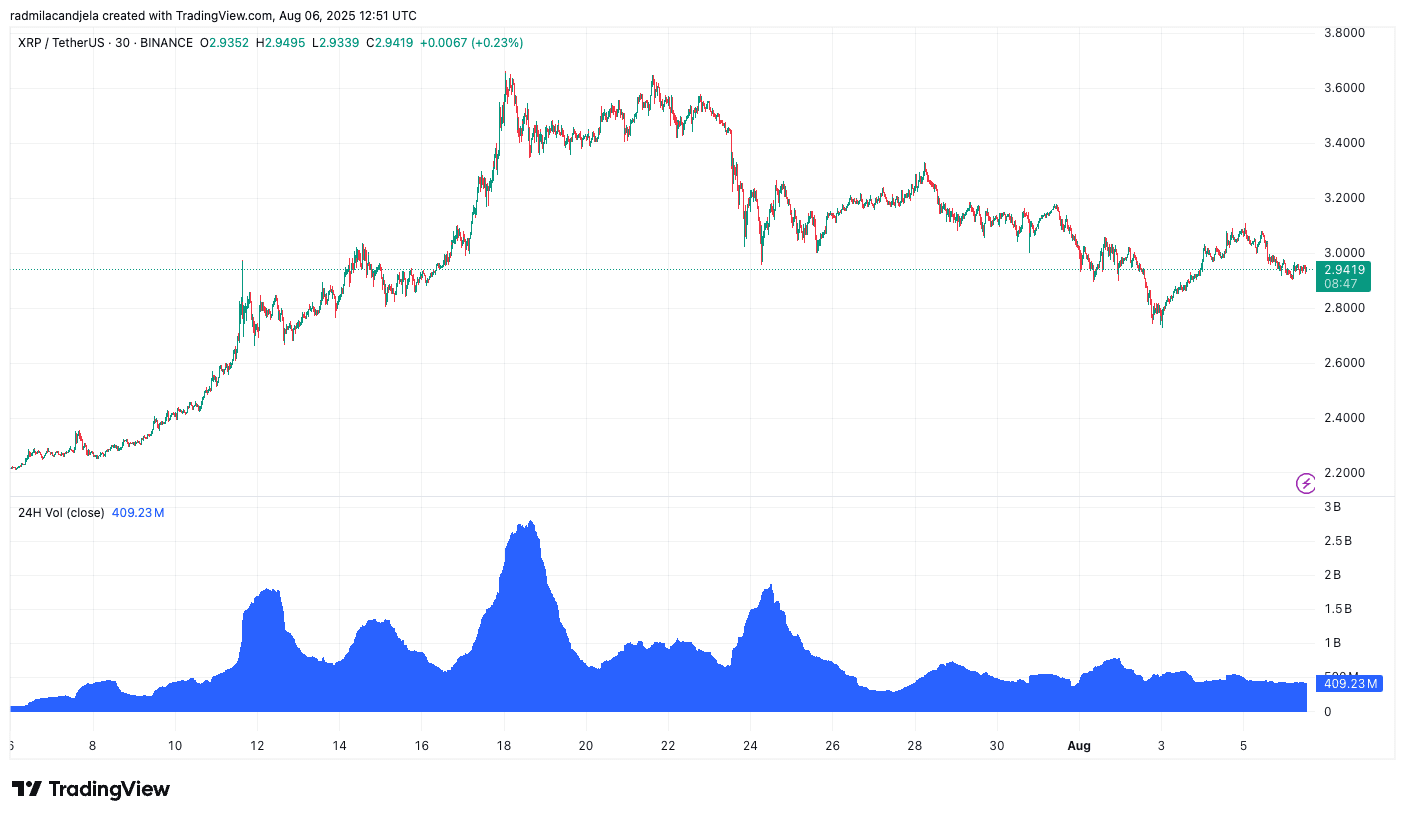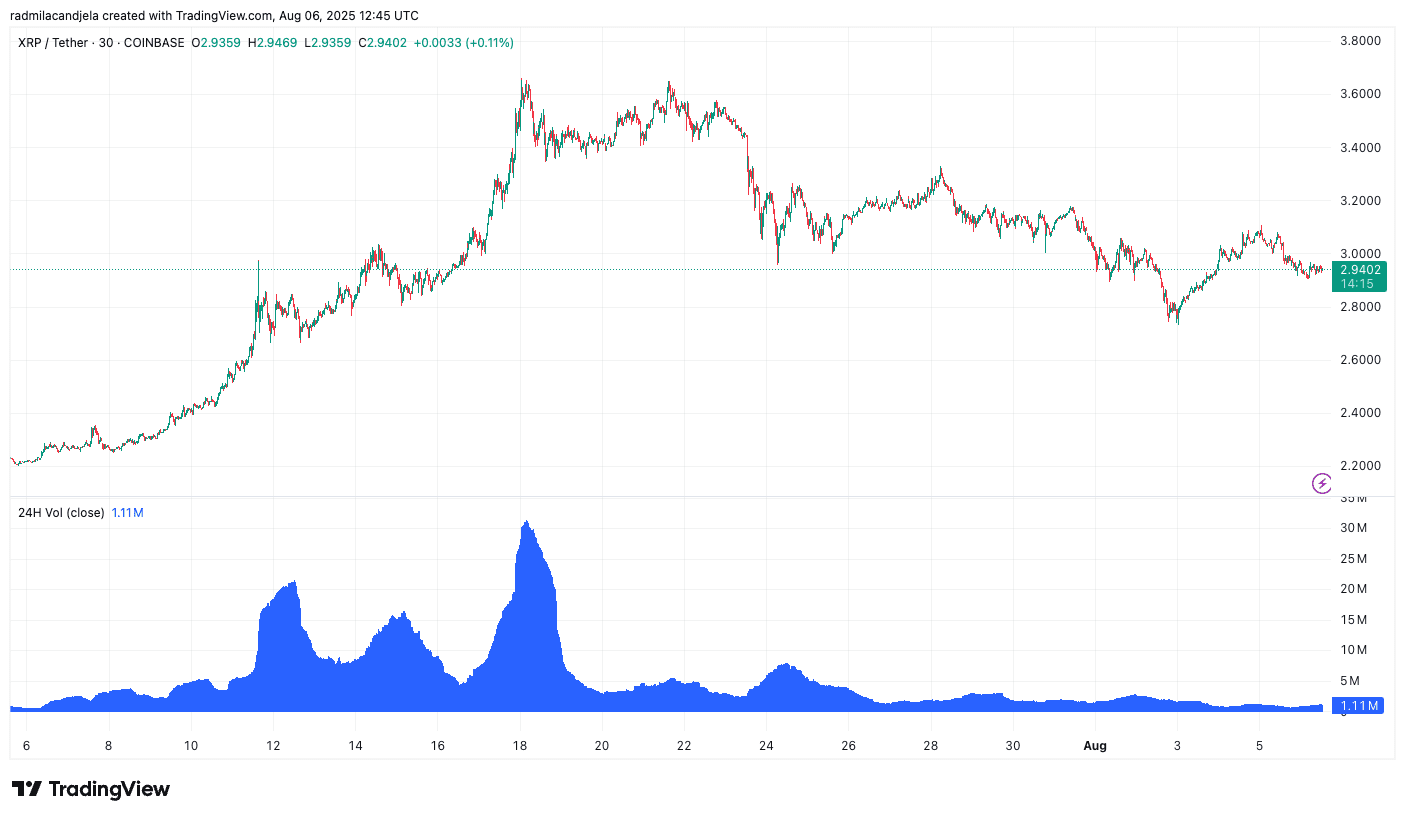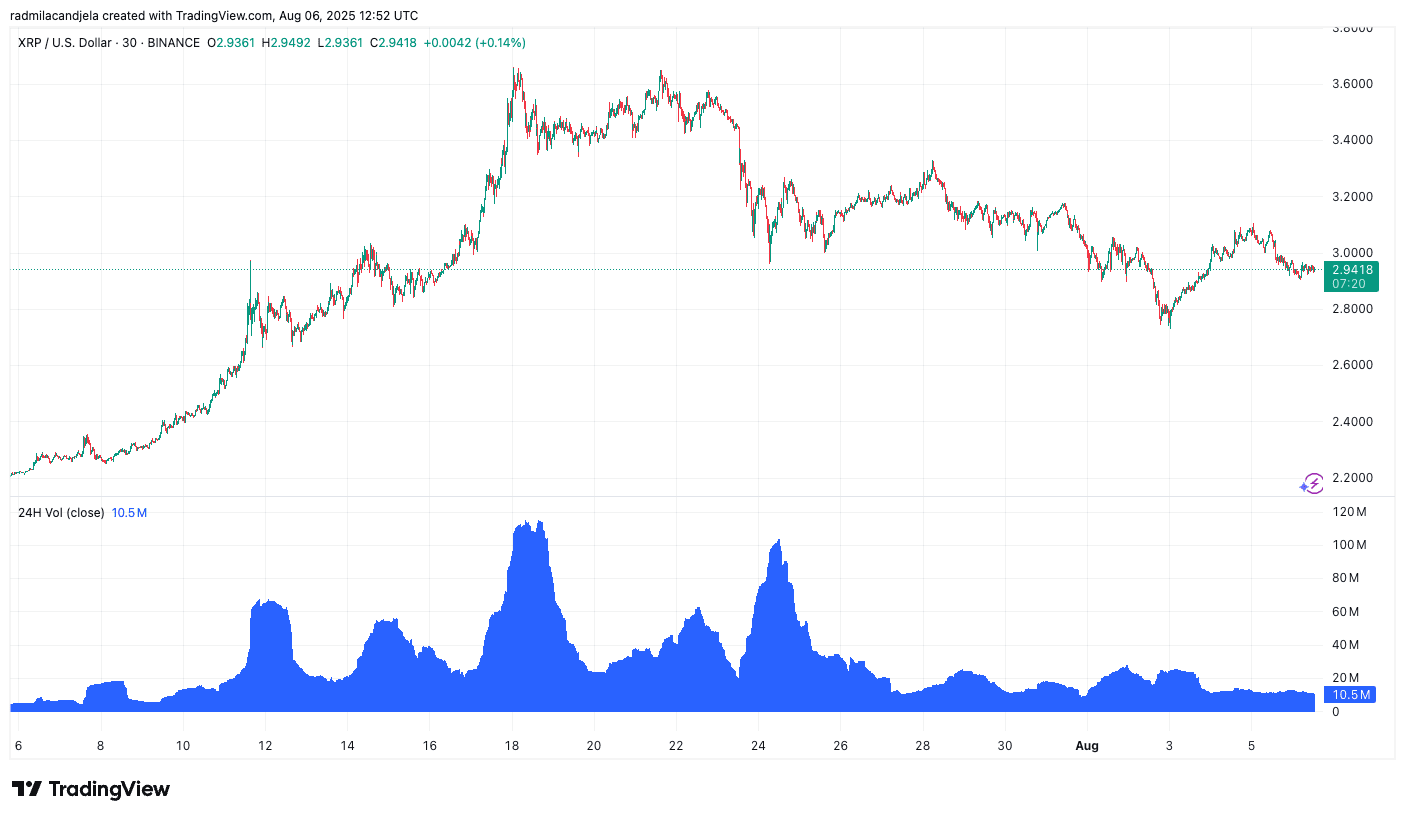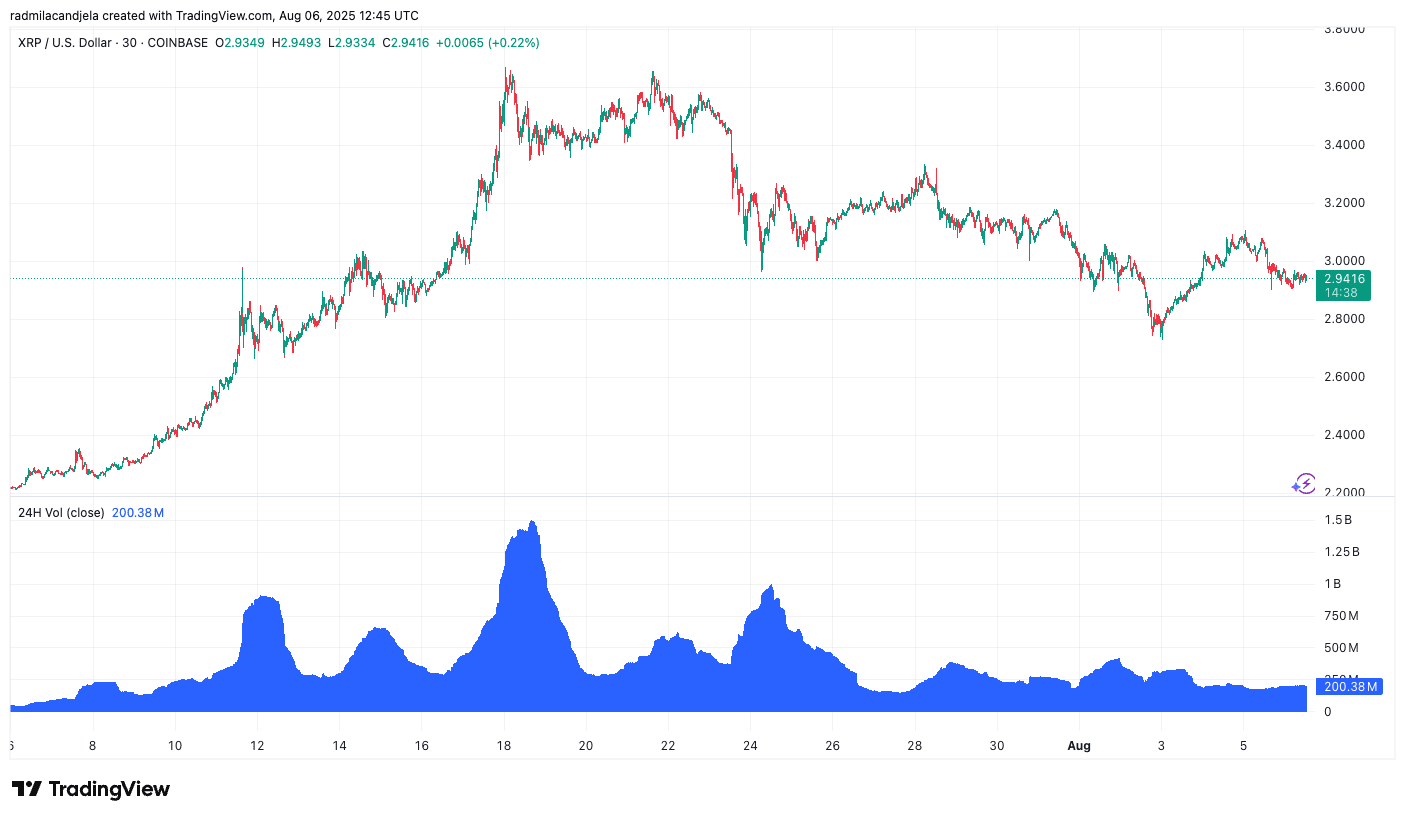Throughout July, XRP was traded consistently impressively on both Binance and Coinbase, despite the marked differences in where and how liquidity was allocated.
Although the prices between USD and USDT trading pairs only differ by a few basis points, the trading volume is strongly differentiated between the two exchanges. Binance nearly dominates the liquidity for the XRP/USDT pair, while Coinbase leads in the trading volume of XRP/USD.
Fragmented liquidity, yet prices remain close
Data from the past 30 days shows that the closing prices of all four XRP pairs traded on both exchanges are closely aligned, especially the XRP/USDT pair on Binance and Coinbase, which achieved a yield correlation coefficient of up to 0.999.
The average price difference between any two pairs is below $0.003, with the largest spread being only $0.0164 – equivalent to about 55 basis points. This indicates that arbitrage forces are operating effectively, keeping XRP prices nearly uniform across exchanges and currency pairs.
Although prices are nearly equal, some small but consistent trends still emerge. On both exchanges, the trading pair with USD tends to be priced slightly higher than the USDT pair. Specifically, on Binance, XRP/USD is on average $0.00109 higher than XRP/USDT (around 3.6 basis points), while on Coinbase the difference is $0.00079 (equivalent to 2.5 basis points). These differences reflect the conversion costs between fiat and stablecoins, as well as minor differences in order matching mechanisms.
Clear differentiation in trading volume
The biggest difference lies in trading volume. Binance completely dominates the XRP/USDT pair, with an average 24-hour trading volume of over 790 million XRP, while the corresponding figure on Coinbase is only 5.5 million XRP – equivalent to a market share split of 99.3% – 0.7% in favor of Binance.

This explains why the price on Coinbase's XRP/USDT order book occasionally experiences more volatile movements. At certain times, such as on July 19 and August 2, the price difference for USDT between the two exchanges exceeded 40 basis points, causing the price on Binance to be over $0.01 higher.

Conversely, for the XRP/USD pair, Coinbase has a clear advantage, accounting for over 92% of total volume, with an average of 398 million XRP traded daily, compared to only 30 million on Binance. As a result, the USD price difference between the two exchanges is very low – averaging $0.00027 (less than 1 basis point), rarely exceeding ±$0.005.

High price efficiency despite a fragmented market
The XRP/USDT pair on Coinbase is where the highest price volatility occurs among the four pairs, with short-term price deviations reaching up to 30–47 basis points. Although these phenomena are rare and quickly resolved, they indicate that fragmented liquidity can lead to local fluctuations in an otherwise efficient capital market.
The total average price dispersion of all four pairs is only $0.00283 at any given moment (equivalent to under 10 basis points at a price of $3). Even during the most active periods, the deviation only reaches a maximum of $0.0164. This confirms that although liquidity is uneven, the price discovery process remains effectively shared among exchanges and currency pairs.

Logarithmic return analysis over a 30-minute frame further reinforces this: all pairs move almost in sync. The correlation coefficient between like pairs (USD/USD or USDT/USDT) on both exchanges approaches 0.999, while between two types of exchange rates on the same exchange is also above 0.997.
This is a sign that the cash flow on each exchange does not significantly differ in market expectations – thanks to the active participation of arbitrage trading bots, market makers, and cross-exchange traders.
However, the influences of market structure still persist. On Coinbase, the thin USDT order book causes XRP prices to fluctuate more dramatically and be less stable. Conversely, Binance has a deeper USDT order book and a clear advantage, but the XRP/USD pair on this exchange has low volume, with daily fluctuations also being smaller.
This is very important for high-volume traders: slippage can vary significantly depending on the exchange and type of asset being priced.
Conclusion
XRP sits at the intersection of two worlds: on one side is stable liquidity from stablecoins (USDT), and on the other is the traditional fiat system (USD). Although prices are almost the same everywhere, the underlying structure behind the transactions is very different. The market operates efficiently, yet asymmetrically.
USDT volume remains Binance's strength, while Coinbase leads in fiat accessibility. The spread between USDT and USD is generally below 4 basis points, while between the two exchanges it rarely exceeds 10 basis points.
For multi-exchange traders, it is important not only to consider the quoted price but also the depth and actual liquidity of each order book.